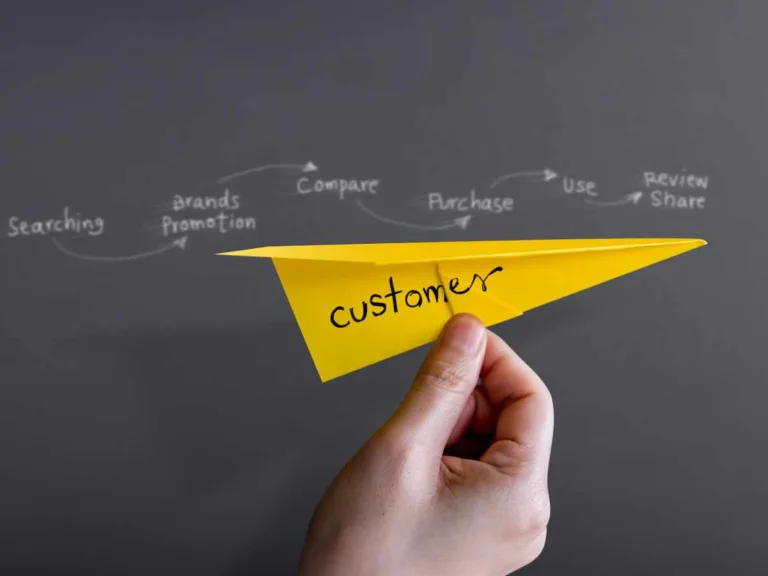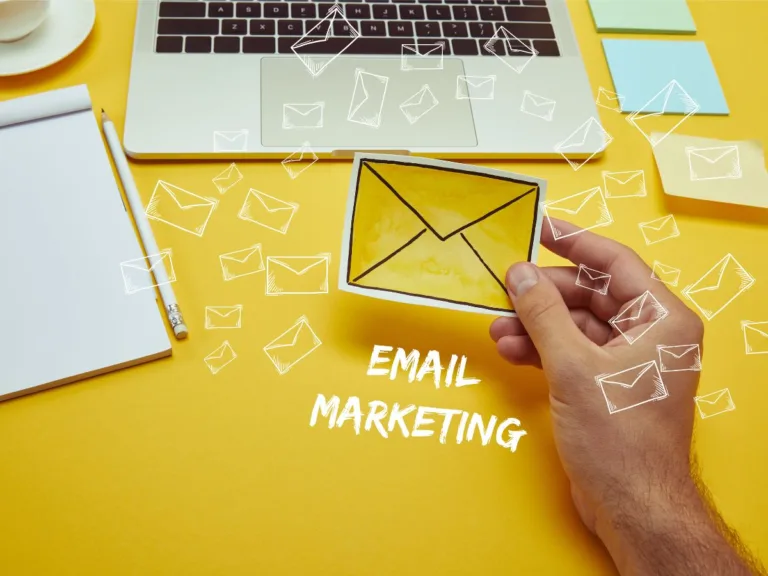How Can Email Marketing Fuel Your Overall Inbound Strategy?
You know the feeling when you check your inbox and see a personalized email that speaks directly to your needs and interests?
That’s the power of email marketing in action.
In today’s digital age, email remains one of the most effective tools for engaging with your audience, nurturing leads, and driving conversions. When used strategically as part of your inbound marketing strategy, email can fuel unprecedented success for your business.
Key Takeaways:
- Email Marketing Drives Engagement: Email is a powerful tool to connect with your audience and keep them engaged with your brand or business.
- Personalization is Key: Tailoring your email campaigns to individual preferences and behaviors can significantly increase open rates and conversions.
- Automation Streamlines Processes: Using automation tools can save time and resources while ensuring timely, targeted communication with your audience.
- Measure and Analyze Performance: Tracking key metrics such as open rates, click-through rates, and conversion rates can help you optimize your email marketing strategy for better results.
- Integration with Inbound Marketing: Email marketing can complement your inbound strategy by nurturing leads, driving traffic to your website, and ultimately converting leads into customers.
Understanding Email Marketing
The Basics of Email Marketing
Some businesses underestimate the power of email marketing in driving their inbound strategy. However, email marketing is a highly effective tool for engaging with your audience, nurturing leads, and converting prospects into loyal customers. It involves sending personalized and targeted emails to a specific group of people who have shown interest in your products or services, with the goal of building relationships and boosting sales.
Why Email Marketing Is More Relevant Than Ever
An crucial aspect of modern marketing, email marketing remains a crucial communication channel for businesses. Email has stood the test of time and continues to deliver impressive results in terms of ROI and customer engagement. With the rise of social media and other digital marketing channels, email marketing remains a vital tool for connecting with your audience in a more personal and direct way.
Marketing through email allows you to reach your audience directly in their inbox, where they are more likely to engage with your content. Additionally, email marketing provides a higher level of control and customization over your messaging, allowing you to tailor your communications to specific segments of your audience based on their behaviors, preferences, and demographics.
Building Your Email Marketing Strategy
Setting Clear Goals and Objectives
One of the most crucial steps in building your email marketing strategy is setting clear goals and objectives. What do you hope to achieve with your email campaigns? Are you aiming to increase brand awareness, drive website traffic, generate leads, or boost sales? By defining your goals from the outset, you can tailor your email content and design to align with these objectives. Whether it’s improving open rates, click-through rates, or conversions, having a clear roadmap will guide your efforts towards success.
Understanding Your Audience
Your email marketing strategy should revolve around understanding your audience on a deep level.
Knowing who your subscribers are, their preferences, interests, and pain points is key to creating relevant and engaging content. Segmenting your email list based on demographics, behaviors, or past interactions can help you deliver personalized messages that resonate with different audience segments.
Personalization can significantly increase engagement and conversion rates, so invest time in getting to know your subscribers. And when I say know them, REALLY know them. You don’t want to be the business that sends out tone-deaf or clueless emails.
If you watched the video, you’ll see what I mean. It may be funny here, but it can be downright annoying. There are times when it can even erode your confidence in the business. Imagine, for instance, if you’re the customer that gets an email offering you a discount for something that you just purchased from the website a few minutes ago.
To effectively understand your audience, you can conduct surveys, collect feedback, analyze past campaign performance, and leverage data analytics tools. By continuously monitoring and analyzing your audience’s behavior and responses, you can refine your email marketing strategy to better cater to their needs and interests.
Crafting Your Message
After defining your target audience and understanding their needs, it’s time to craft a message that speaks to them. Your email is a direct line of communication with your subscribers, so it’s important to get it right. In this chapter, we will investigate the art of creating compelling and engaging email content that will resonate with your audience and drive results.
The Art of Subject Lines
The subject line is the first thing your subscribers will see in their inbox, so it’s crucial to make it count. A captivating subject line can greatly increase your open rates and entice recipients to engage with your email. Make sure to keep it concise, enticing, and relevant to the content of the email. Consider personalization and creating a sense of urgency to grab the reader’s attention.
Content That Captivates
The body of your email is where you have the opportunity to deliver valuable information, promotions, or updates to your subscribers. Compelling content that is well-written, visually appealing, and provides value to the reader will keep them engaged and eager to hear more from you. Whether it’s a newsletter, product announcement, or a blog post, make sure your content is relevant and compelling to drive the desired action from your audience.
One way to ensure your content is captivating is to incorporate storytelling. Share personal anecdotes, customer success stories, or industry insights that resonate with your audience. By connecting emotionally with your subscribers, you can build a stronger relationship and drive better results for your email marketing campaigns.
Optimizing for Success
Segmentation and Personalization
Despite the vast number of emails people receive daily, it’s possible to stand out with your email marketing efforts. Any successful email campaign begins with segmentation and personalization. By segmenting your email list based on demographics, behavior, or preferences, you can tailor your messages to specific groups, making them more relevant and engaging.
Timing and Frequency: When to Hit Send
The timing and frequency of your emails play a crucial role in the success of your campaigns. The goal is to find the sweet spot where your audience is most receptive to your messages. Frequency is key – bombarding subscribers with too many emails can lead to opt-outs or disengagement. It’s important to strike a balance and test different timings to see what generates the best response from your audience.
Frequency plays a significant role in keeping your brand top-of-mind for your subscribers, but it’s crucial to find the right balance to avoid overwhelming them with content. Regularly testing different frequencies and analyzing the results can help you determine the optimal email cadence for your audience.
Align with the Customer Journey
The key to insanely effective emails is through email marketing customer journey alignment. To do this, it is essential to understand the various stages of the customer’s journey. This includes awareness, consideration, decision-making, and retention phases. Once you understand how customers behave and make their purchase decisions, you’ll be able to tailor email campaigns to resonate with customers at each stage, providing relevant content and offers.
Leveraging Technologies and Tools
Email Marketing Platforms: Choosing the Right One
For businesses looking to enhance their email marketing strategies, selecting the right email marketing platform is crucial. Platforms like MailChimp, Constant Contact, and ConvertKit offer a range of features to help you create engaging campaigns, segment your audience, and automate your email sequences. When choosing a platform, consider your budget, the size of your email list, and the specific features you need to drive engagement and conversions.
Analytics and Tracking: Measuring Your Impact
On your journey to email marketing success, tracking and analyzing your campaign performance is key. Utilizing tools like Google Analytics and your chosen email marketing platform’s built-in tracking features can provide valuable insights into your audience’s behavior and campaign effectiveness. By monitoring metrics such as open rates, click-through rates, and conversion rates, you can make informed decisions to optimize your email strategy and drive better results.
From time to time, you should also do an email marketing audit to identify areas for improvement. This involves a comprehensive review of your email marketing strategy, campaigns, and performance. The audit also looks at the design and content of your emails, list segmentation practices, and overall alignment with best practices in email marketing.
Your email marketing efforts should not operate in a vacuum. By monitoring and analyzing your email campaign data, you can gain a deeper understanding of your audience’s preferences and behavior. Use this information to tailor your content, timing, and offers for maximum impact and engagement.
Technologies and tools play a crucial role in helping you navigate the ever-evolving landscape of email marketing. By leveraging the right platforms and analytics tools, you can refine your strategies, enhance your targeting, and ultimately achieve unprecedented success in your inbound marketing efforts.
Staying Compliant and Ethical
Now more than ever, it is crucial for businesses to prioritize staying compliant and ethical in their email marketing efforts. In a digital age where privacy concerns are at the forefront, maintaining the trust of your audience through legal and ethical practices is paramount.
Navigating Email Regulations and Privacy Laws
An important aspect of staying compliant in email marketing is understanding and adhering to email regulations and privacy laws. Regulations like the CAN-SPAM Act in the US and the GDPR in the EU have strict guidelines on how businesses can collect, use, and store personal data. It is imperative to familiarize yourself with these laws and ensure that your email marketing practices align with them to avoid hefty fines and penalties.
Maintaining Trust with Your Audience
An ethical approach to email marketing involves maintaining trust with your audience. This means being transparent about how you collect and use their data, providing value with each email, and respecting their preferences. By building a relationship based on trust and respect, you can cultivate a loyal customer base that is more likely to engage with your content and make purchases.
If you want to hit two goals with one step, you’ll find value in adopting permission based email marketing, which is a strategy that involves sending promotional emails to customers who have explicitly opted in to receive them. This approach ensures that recipients have given consent to receive marketing messages, resulting in higher engagement rates and conversion opportunities.
By obtaining permission from the customer beforehand, businesses can build trust and establish a positive relationship with their audience. At the same time, permission-based email marketing also helps companies comply with regulations such as the CAN-SPAM Act, which require explicit consent for sending commercial emails.
This targeted approach allows businesses to tailor their messaging to suit the preferences of each individual subscriber, leading to more personalized and relevant communication. Additionally, using permission-based email marketing can help reduce the likelihood of emails being marked as spam or unsubscribed from, ultimately improving deliverability rates.
Integrating Email with Your Overall Inbound Strategy
Your inbound strategy is like a puzzle, with email marketing being a crucial piece that ties everything together. By integrating email seamlessly into your overall strategy, you can unlock a world of opportunities to engage with your audience and drive meaningful results. Let’s explore how you can leverage email to enhance various aspects of your inbound efforts.
Email and Social Media: A Synergistic Relationship
Relationship: Email and social media are a match made in marketing heaven. By combining the power of these two channels, you can create a synergistic relationship that amplifies your reach and engagement. Use social media to grow your email list by promoting exclusive content or offers, and leverage email to drive traffic to your social platforms and foster deeper connections with your audience.
Email as the Backbone of Content Marketing Campaigns
Content: It’s no secret that email is the backbone of content marketing campaigns. With email, you can deliver personalized, targeted content directly to your audience’s inbox, ensuring that your message gets noticed. Whether you’re sharing blog posts, videos, or infographics, email allows you to nurture leads and guide them through the buyer’s journey with relevant and timely content.
Fuel Your Business Success with Email Marketing
Upon reflecting on the power of email marketing in fueling your inbound strategy for unprecedented success, it is clear that email remains a vital tool in engaging and nurturing leads. By leveraging targeted campaigns, personalized content, and automation, businesses can build stronger relationships with their audience and drive significant results.
Remember, with the right approach, email marketing can not only help you attract more leads and conversions but also create lasting connections with your customers. So, continue to refine your email strategies, monitor performance metrics, and adapt to the ever-changing digital landscape to stay ahead of the competition and maximize your success.
FAQs
Q: What is Email Marketing and why is it important for inbound strategy?
A: Email Marketing is a digital marketing strategy that involves sending commercial messages to a group of people via email. It is important for inbound strategy as it helps businesses nurture leads, drive conversions, and build strong relationships with customers.
Q: How can Email Marketing benefit my business?
A: Email Marketing can benefit your business by providing a direct line of communication with your audience, driving traffic to your website, increasing brand awareness, and generating leads and sales.
Q: What are the key components of a successful Email Marketing campaign?
A: The key components of a successful Email Marketing campaign include building a targeted email list, creating compelling content, personalizing emails, optimizing for mobile, and analyzing and optimizing campaign performance.
Q: How can I measure the success of my Email Marketing campaigns?
A: You can measure the success of your Email Marketing campaigns by tracking metrics such as open rates, click-through rates, conversion rates, and ROI. This data will help you understand what is working and what can be improved in your campaigns.
Q: What are some best practices for effective Email Marketing?
A: Some best practices for effective Email Marketing include segmenting your email list, using clear and compelling subject lines, personalizing emails, including a clear call-to-action, testing and optimizing your campaigns, and ensuring compliance with email marketing regulations such as GDPR and CAN-SPAM.




